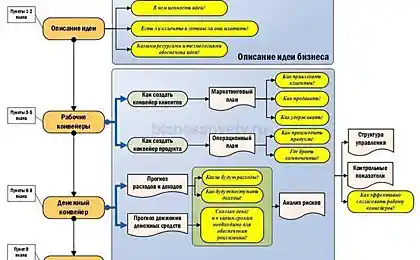243
Johari Window: A Technique to Help You Identify Your Strengths and Weaknesses
How often do we think we know ourselves? In reality, every person
It has “blind zones” that are invisible to itself, but quite obvious to others.
To see the full picture of its features,
Psychologists Joseph Lift and Harrington Ingham introduced the Johari Window in 1955.
It's not just a tool for self-knowledge, it's a real psychological map.
It helps to identify the strengths and weaknesses of the individual,
build more harmonious relationships and increase awareness in communication.

How the Johari Window works
The model consists of four zones (or quadrants), each of which is responsible for the level of awareness.
and perceptions from others:

Why do we need this technique?
The Johari Window allows:
How to Use Johari Window in Practice
One of the classic forms of modeling is to compile a list of qualities.
And compare it with a similar list compiled by a group of several people.
These qualities are then divided into four zones.
The goal is to find coincidences (open zone), differences (blind zone) and mark everything.
A person is “in the shadow” (hidden zone).
Naturally, the unknown area remains undisclosed until situations arise.
They can reveal these hidden qualities.
It is important to interpret the results correctly. If you think that your colleagues unfairly attributed to you “temperature”
Or "love to be late," first try to ask where this opinion came from.
Perhaps this is where the key to personal growth lies.
And if you do not find the qualities that are reported to you,
Ask yourself, “Maybe I just didn’t notice it?”

Expanding the open area
The task of anyone who seeks self-discovery is to gradually increase the open area.
This requires two things: openness to yourself and openness to outside feedback.
The Johari Window is not just a curious model of psychology. It's a real tool.
It helps to track your own strengths and weaknesses and establish deeper ones.
trusting relationships with others. When you know what your society thinks of you,
And while you're clearly aware of your inner motivations, you're in a winning position.
Your actions become more meaningful, and your personal effectiveness is higher.
The main thing is to treat the information received calmly and use it for development.
Not to worry.
The path of self-knowledge is the path of life.
And it's through tools like the Johari Window that we learn to walk consciously and harmoniously.
It has “blind zones” that are invisible to itself, but quite obvious to others.
To see the full picture of its features,
Psychologists Joseph Lift and Harrington Ingham introduced the Johari Window in 1955.
It's not just a tool for self-knowledge, it's a real psychological map.
It helps to identify the strengths and weaknesses of the individual,
build more harmonious relationships and increase awareness in communication.

How the Johari Window works
The model consists of four zones (or quadrants), each of which is responsible for the level of awareness.
and perceptions from others:
- Open zone. This is the part of you that is well known to you and others.
For example, your personality traits, habits and skills that you easily show others. - Blind spot. Here are features that are obvious to others, but remain invisible to yourself.
This can include both negative habits (for example, interrupting the interlocutor) and undiscovered talents. - Hidden zone. This is your personal territory, known to you, but inaccessible to others.
As a rule, this is where secrets and personal experiences live, which you prefer not to put out in public. - Unknown zone. It's all about what you don't know or what you don't know.
The hidden potential, the unconscious aspects of the personality that can only manifest in certain circumstances.

Why do we need this technique?
The Johari Window allows:
- Evaluate the real character traits. See how you perceive yourself
and how your surroundings see you. - Reduce blind spots. Get feedback from colleagues, friends or relatives,
To learn about your habits or features that you do not notice. - Expand the open area. By becoming more transparent, you build trust.
Develop healthy communication and learn to talk about your needs. - Develop potential. Unconscious (or unknown) talents are sometimes revealed.
When a person gets a new role or a non-standard task, and suddenly finds new resources.
How to Use Johari Window in Practice
One of the classic forms of modeling is to compile a list of qualities.
And compare it with a similar list compiled by a group of several people.
These qualities are then divided into four zones.
The goal is to find coincidences (open zone), differences (blind zone) and mark everything.
A person is “in the shadow” (hidden zone).
Naturally, the unknown area remains undisclosed until situations arise.
They can reveal these hidden qualities.
It is important to interpret the results correctly. If you think that your colleagues unfairly attributed to you “temperature”
Or "love to be late," first try to ask where this opinion came from.
Perhaps this is where the key to personal growth lies.
And if you do not find the qualities that are reported to you,
Ask yourself, “Maybe I just didn’t notice it?”

Expanding the open area
The task of anyone who seeks self-discovery is to gradually increase the open area.
This requires two things: openness to yourself and openness to outside feedback.
- A sincere dialogue with yourself. Ask yourself what your feelings, ideas or habits are.
You prefer to hide from others and why. - Feedback. Do not be afraid to ask close people, colleagues and friends.
What they think you are doing well and what needs adjustments.
The main thing is to respond to feedback without offense, seeing it as a resource for improvement. - Experimentation. Try yourself in new roles, do other projects.
Engage in activities you have never done before.
This can highlight an unexpected facet of your personality (and take it out of the unknown zone).
The Johari Window is not just a curious model of psychology. It's a real tool.
It helps to track your own strengths and weaknesses and establish deeper ones.
trusting relationships with others. When you know what your society thinks of you,
And while you're clearly aware of your inner motivations, you're in a winning position.
Your actions become more meaningful, and your personal effectiveness is higher.
The main thing is to treat the information received calmly and use it for development.
Not to worry.
The path of self-knowledge is the path of life.
And it's through tools like the Johari Window that we learn to walk consciously and harmoniously.























